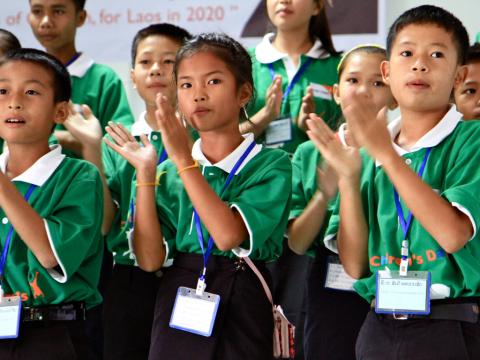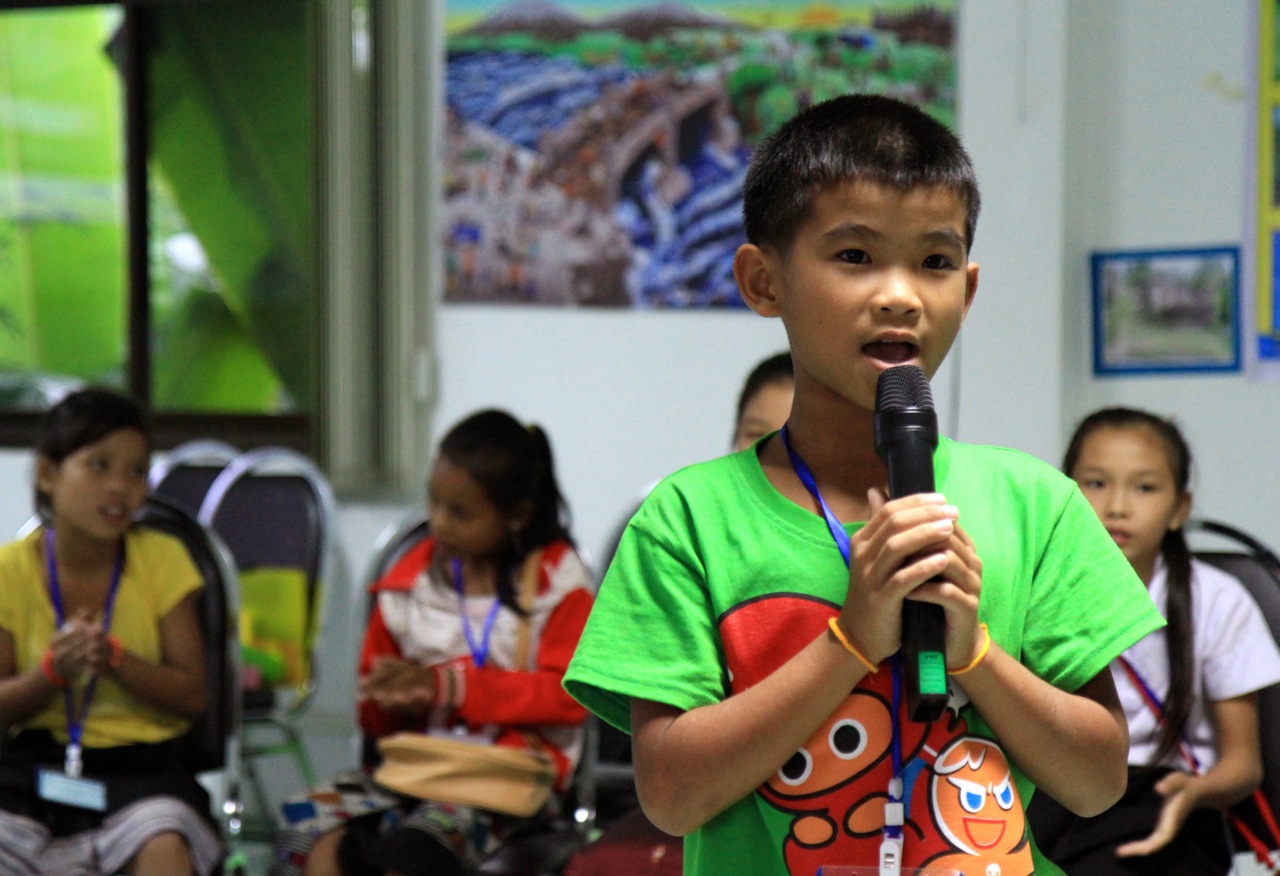Children Participate in Development Progress in Laos

20 August 2014 -Vientiane, Lao PDR
Children from across rural Laos unfurled a banner drawing they created showing what they imagine their villages will look like in 2020 to an audience of over 100 World Vision staff, community members, government counterparts, and other NGO guests.
For almost 46 years World Vision has been working in Laos, and part of the organizational strategy is to, “Listen to the voice of children in all we do“ as well as promote child participation in our programs. To achieve this goal, World Vision celebrated its second annual Child Forum.
With the cooperation of the National Committee of Rural Development and Poverty Eradication, 22 children from 7 districts in Luang Prabang, Bolikhamxay, Khammouane, and Savannaket were selected as representatives from the 600 villages where World Vision does programming work.
“The purpose of this event is to encourage the senior management team of World Vision Lao and government counterparts to understand the needs of the children and listen to their voices more. If we plan for long term development, children are the ones who will continue to develop or solve what we have done today,” says Vilasai Thammavong, Child Protection and Child Participation Manager of World Vision Lao.
Through group discussion, photo presentations, and drama performances, the Senior Management team of World Vision, government counterparts and development partners learned about the needs of the children, through their owns voices and perspectives.
The children spoke about their hopes in order to see sustainable development in their villages.
“There are many changes happening in my village; more children like me attend school. We have better access to clean water. There is basic medical care available in my village,” said Ketsana, 12 year old girl from, Pakxeng district. She spoke about the change that World Vision has been contributing in her village.
On the other side, Chonny from Nhommalat said, “There are some challenges that we need to address. For example in my village there is not enough clean water during the dry season. We need help to bring more water pumps into the village.”
“Some of the people in my village are still suffering. Climate change provides direct impact to rice field planting, some years there is not enough water, sometimes there is too much water and the rice fields are flooded,” said Noy, 13, from Pakou who shared about the challenges in her district. Noy continues, “The impact from this issue is that many families do not have enough rice to eat. It also impacts their children’s education. Some children, the same age as me, drop out from school to help their family work. Many parents cannot support their children to continue their studies in the secondary school because the school is 15 km away from the village.”
“We believe that in order for Laos to move to the next level of progress and move beyond the ‘Least Developed Countries’ status everyone needs to participate: men and women, Hmong, Khmu, Taidam and Lao Leum, government, business people, farmers… and also older people, middle-aged people and young people,” said Amelia F Merrick, National Director of World Vision Lao at the event. “As one Lao expert on child development work in Laos said, ‘To shape the future, youth need to be part of the planning of the present’, I couldn’t agree more!”
In 2020, Lao PDR hopes to be released from ‘Least Developed Countries’ status.
More information: 48 countries are currently designated by the United Nations as "Least Developed Countries" (LDCs). Three criteria are used to determine LDC status: Per capita income (gross national income per capita), Human assets (indicators of nutrition, health, school enrolment and literacy), Economic vulnerability (indicators of natural and trade-related shocks, physical and economic exposure to shocks, and smallness and remoteness). (UN)
